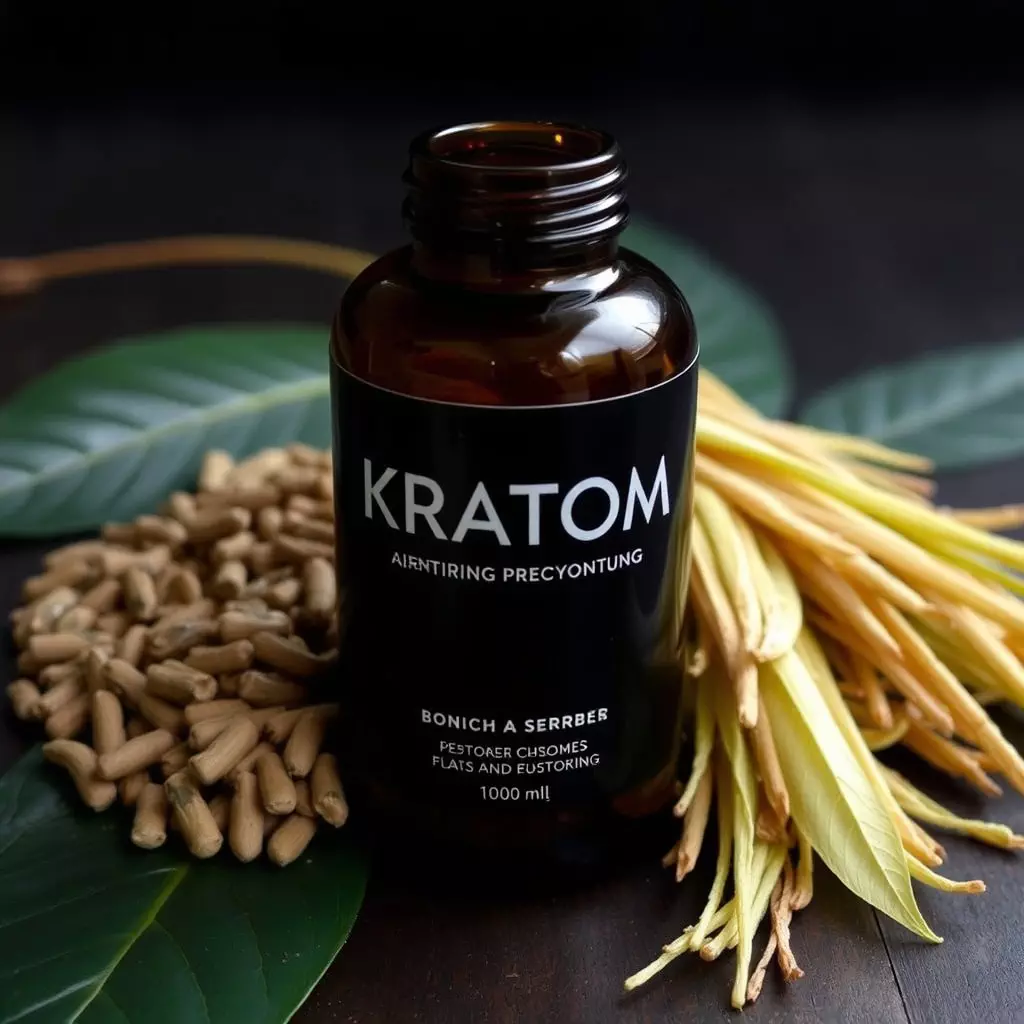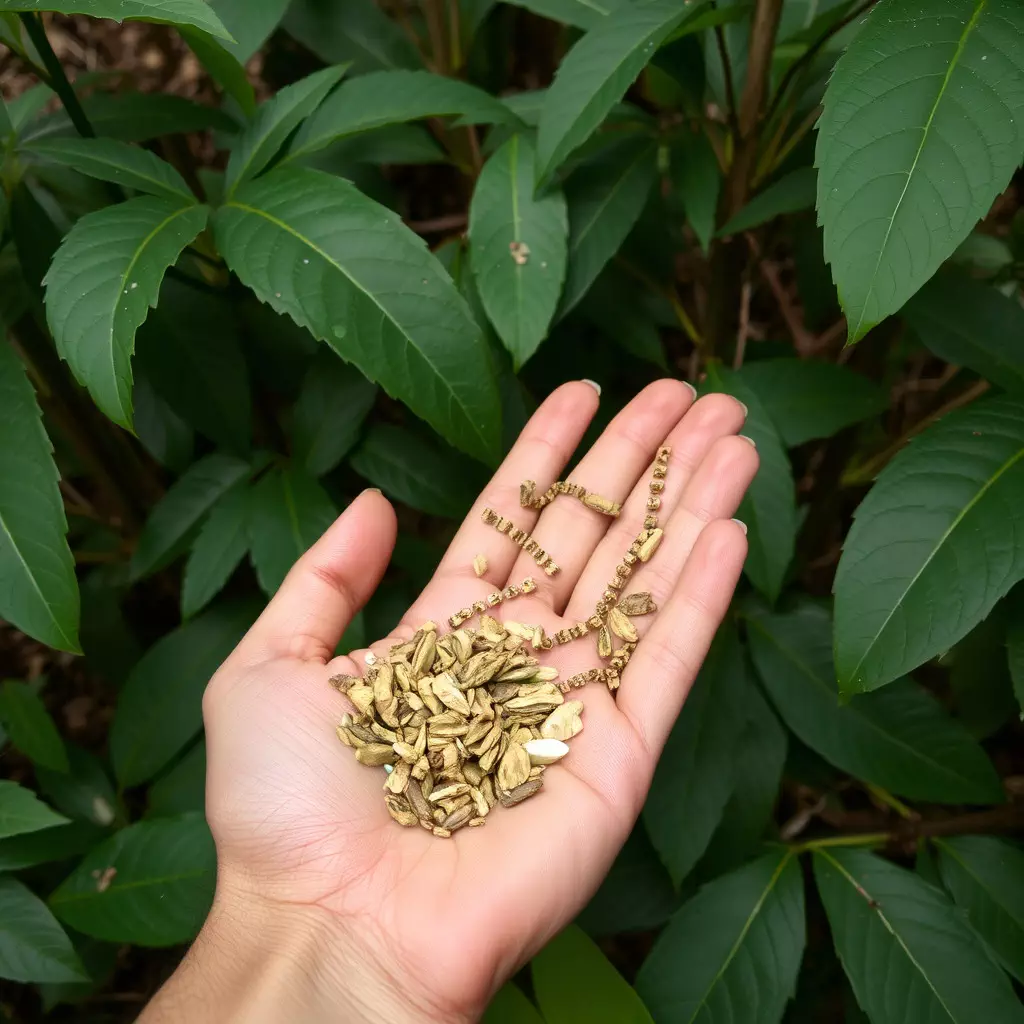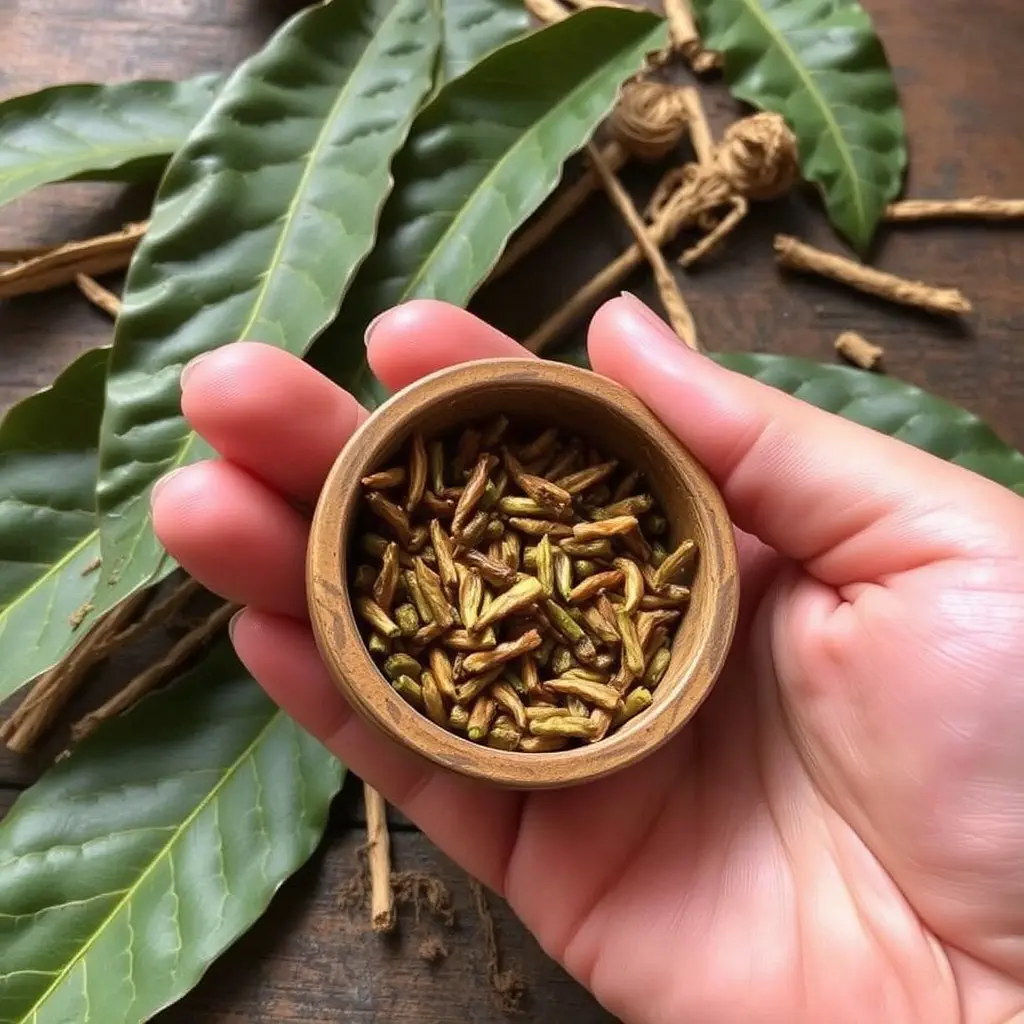Kratom, derived from the Mitragyna speciosa plant, has garnered attention in sports nutrition for its potential to enhance athletic performance and endurance. The alkaloids mitraphylline and 7-hydroxymitragynine found in kratom are believed to influence pain perception, mood regulation, and fatigue, which may be beneficial for athletes during intense training or competitions. These compounds could reduce perceived exertion and mental fatigue, allowing for sustained effort over longer periods. However, the precise dosage and timing of kratom intake are crucial to maximize performance while minimizing side effects. The effectiveness of kratom can vary depending on the strain used, with each offering a different balance between stimulation and relaxation. Athletes considering its addition to their sports nutrition plan should consult with professionals to ensure it complements their training regimen and dietary approach for optimal performance. It's essential to consider individual responses and adhere to legal regulations concerning kratom use. Proper monitoring and professional guidance are necessary to confirm that kratom contributes positively to an athlete's well-being without negative consequences, within the context of sports nutrition.
Exploring the frontiers of sports nutrition, this article delves into the potential benefits of incorporating kratom for endurance improvement. While kratom is gaining attention in athletic circles, its role in optimizing performance and aiding muscle recovery remains a nuanced subject. We will navigate the complexities of safely integrating kratom into a balanced sports nutrition plan, ensuring athletes can harness its possible advantages without compromising their health. Join us as we dissect the intersection of kratom and sports nutrition, offering insights that could elevate your training regimen.
- Optimizing Athletic Performance: The Role of Kratom in Sports Nutrition
- Kratom's Impact on Muscle Recovery and Endurance Training
- Safe Integration of Kratom into a Balanced Sports Nutrition Plan
Optimizing Athletic Performance: The Role of Kratom in Sports Nutrition

Kratom, a plant from Southeast Asia, has garnered attention in the realm of sports nutrition for its potential ergogenic properties. Athletes seeking to enhance their endurance and performance may find kratom’s impact on energy levels and fatigue management particularly intriguing. The alkaloids present in kratom leaves, namely mitragynine and 7-hydroxymitragynine, are believed to influence the body’s pain perception and mood regulation, which can be beneficial for athletes during prolonged training sessions or competitions. These compounds may help in extending the duration of exercise by reducing perceived exertion and mental fatigue, thereby allowing for sustained effort over longer periods.
Incorporating kratom into a sports nutrition plan requires careful consideration of dosage and timing to optimize performance without risking negative side effects. The strain of kratom and individual sensitivity play significant roles in determining the most effective way to use it. For instance, certain strains may provide a stimulating effect that can enhance focus and energy, while others might offer calming properties that aid in recovery. Athletes interested in utilizing kratom should consult with a healthcare professional or a sports nutritionist to integrate it safely into their regimen, ensuring that it complements their overall training and dietary strategies for peak performance.
Kratom's Impact on Muscle Recovery and Endurance Training

Kratom, a tropical evergreen tree native to Southeast Asia, has garnered attention in the realm of sports nutrition for its potential ergogenic benefits. Within the context of muscle recovery and endurance training, kratom’s alkaloids, particularly mitraphylline and 7-hydroxymitragynine, have been studied for their role in enhancing athletic performance. These compounds are believed to modulate pain perception and fatigue, which can be crucial for athletes pushing their limits during intense workouts or competitions. The analgesic properties of kratom may aid in reducing muscle soreness post-exercise, allowing for quicker recovery times and enabling athletes to maintain a rigorous training schedule without overtaxing their bodies. Moreover, kratom’s influence on acetylcholine release could potentially improve muscle contractions, contributing to greater endurance and stamina during prolonged activities. When integrated into a well-rounded sports nutrition plan that includes proper hydration, balanced diet, and adequate rest, kratom may serve as a valuable tool for athletes looking to optimize their recovery and enhance their training regimens for peak performance. However, it is imperative for individuals to consult with healthcare professionals before incorporating kratom into their sports nutrition strategy, given the complexity of its effects and potential interactions with other supplements or medications.
Safe Integration of Kratom into a Balanced Sports Nutrition Plan

Integrating kratom into a sports nutrition plan requires careful consideration to ensure safety and efficacy for endurance athletes. Kratom, derived from the leaves of Mitragyna speciosa, has been traditionally used for its stimulatory and pain-relieving properties. In the context of sports nutrition with kratom, it’s crucial to focus on how this botanical can complement an athlete’s regimen without causing harm or violating sporting regulations. Alkaloids found in kratom, such as 7-hydroxymitragynine and mitraphylline, may contribute to increased stamina and reduced fatigue, potentially enhancing endurance performance. Athletes should consider incorporating kratom into their pre-workout or competition regimen, taking note of the appropriate dosage to avoid adverse effects. It’s essential to approach this integration with caution, as the effects of kratom can vary greatly among individuals, and its legal status may differ by region. Consultation with a healthcare provider or a sports nutritionist is recommended to navigate the safe use of kratom in conjunction with other dietary supplements and to ensure that it aligns with the athlete’s specific nutritional needs and performance goals. Additionally, monitoring one’s response to kratom is vital, as its inclusion should be part of a balanced approach to sports nutrition, focusing on optimizing energy levels, recovery, and overall well-being without compromising health or ethical standards in sports.
In conclusion, the integration of kratom within a sports nutrition regimen offers promising benefits for athletes seeking to enhance their endurance and improve recovery times. As explored in “Optimizing Athletic Performance: The Role of Kratom in Sports Nutrition,” kratom’s unique alkaloids have been associated with increased stamina, reduced fatigue, and heightened focus—all critical factors for optimal performance. The discussion on “Kratom’s Impact on Muscle Recovery and Endurance Training” underscores the potential of kratom to aid in muscle recovery, which is essential for sustained athletic activities. It is imperative, however, that this supplement is safely incorporated into a comprehensive sports nutrition plan, as detailed in “Safe Integration of Kratom into a Balanced Sports Nutrition Plan.” By considering the nuances of individual health needs and adhering to recommended dosages, athletes can potentially leverage kratom to bolster their endurance without compromising their well-being. For those interested in sports nutrition with kratom, a careful and informed approach is key to harnessing its advantages safely and effectively.






